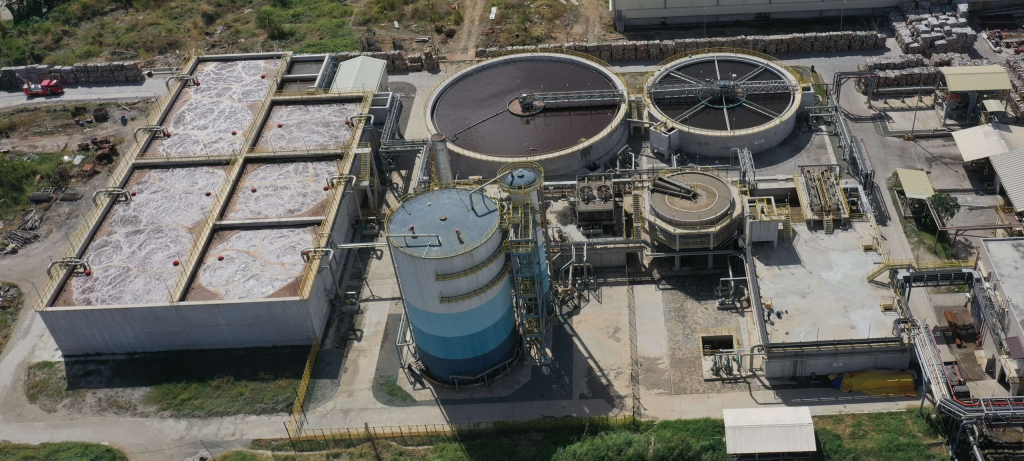Factories run machines, blend compounds, and rinse equipment daily. This regular work often leaves behind dirty water packed with chemicals, oils, and heavy metals. That’s where the chemical treatment of wastewater steps in.
To keep the environment clean and avoid water waste, industries must treat the wastewater before letting it flow out. How to sharpen each step of treatment and ensure water exits cleaner than it enters.
Understand What’s in the Water First
Before treatment begins, collect and inspect the wastewater. Each factory sheds different pollutants—some may leak oils, others toss in metals or dyes. Skipping this step leads to wasted chemicals and weak results.
Start by sampling the water, checking the pH, and listing pollutants. A proper analysis helps teams choose the right treatment method, strength, and dose. Once the profile looks clear, the team can begin applying chemicals that grip the right particles.
Choose the Right Chemicals for the Job
Factories can’t throw in any cleaner and expect results. Each pollutant responds to specific chemicals. For example, ferric chloride and alum can latch onto fine solids and drag them down. Lime adjusts pH levels and neutralises acids.
Coagulants cause small bits to clump together, while flocculants help these clumps swell and drop faster. Knowing which chemical handles which toxin leads to stronger, safer water. This stage builds the heart of the chemical treatment of the wastewater process.
Get the Dosing Just Right
Too little chemical won’t clean enough. Too much will waste resources and harm the pipes or filters. Strike the perfect balance by running small test batches in a lab.
Tweak the amount until the water clears up without residue or harsh reactions. Every treatment team should watch for shifts in wastewater volume or quality and adjust the dose accordingly. Controlled dosing protects workers, pipes, and the environment.
Mix with Care and Precision
Once the right dose is ready, pour it in slowly and stir thoroughly. Poor mixing leaves parts of the water untreated. Strong mechanical mixers stir the water so every drop meets the chemical.
This action helps coagulants catch suspended solids and oils. Many setups use fast mixing at first, then slower movement during the settling phase. This two-step mixing allows the particles to form and settle without breaking apart.
Settle and Separate the Waste
After mixing, let the particles drift downward. This settling process needs stillness and time. Gravity pulls the flocs to the bottom while cleaner water floats on top. Use sedimentation tanks for this phase.
These tanks catch solids and reduce sludge. To speed things up, some plants use tube settlers or plate clarifiers that offer more surface area. These tools lift the success of industrial wastewater treatment by clearing solids more quickly.
Skim the Top, Drain the Bottom
While solids drop, some oils and scum may rise to the surface. Use skimmers to sweep away these floating layers. At the bottom, remove thick sludge that gathers during treatment.
Sludge contains the very pollutants the system removed, so handle and dispose of it carefully. Skimming and draining help prepare water for final polishing before reuse or release. These steps complete the separation part of the process.

Adjust pH for Safety.
Before sending treated water out, test its pH. Most processes require a range near neutral (pH 6.5–8.5). If water feels too acidic or too alkaline, it can harm wildlife or corrode pipelines. Use lime or caustic soda to raise pH.
Drop it using acid when needed. This fine-tuning ensures that the water meets legal discharge limits and keeps rivers, drains, and tanks safe from damage.
Filter Out the Final Traces
Even after settling and skimming, fine particles or traces of chemicals may linger. Use sand filters or carbon beds to grab these leftovers. This stage polishes the water and makes it suitable for reuse in cooling towers or cleaning.
It also prepares the water for further biological or membrane-based treatments if needed. Clean filters mean better flow and fewer blockages later. So, maintain filters regularly to extend their life.
Monitor and Test Constantly
Good treatment doesn’t end with one cycle. Keep checking the water. Use sensors or test kits to monitor turbidity, pH, and chemical residues. This helps spot changes in water quality or system issues early.
Quick detection avoids big failures and prevents pollution leaks. Regular audits keep the chemical treatment of the wastewater process effective. Reliable data gives teams the power to respond, improve, and stay within legal limits.
Train Staff and Update Tools
Even top systems fail without skilled hands behind them. Train workers to measure, mix, monitor, and adjust with care. Teach them how each chemical behaves and why each step matters.
Equip them with the latest safety tools and protective gear. Update old tanks and mixers to save energy and improve results. Empowering staff lifts the success of industrial wastewater treatment more than any new gadget.
Automate Where Possible
Automation helps reduce mistakes and saves time. Add flow meters to check water volume. Use dosing pumps with timers or sensors to release exact chemical amounts.
Link systems to alarms or dashboards that alert the team when issues arise. These tools cut down on human error and speed up response time. Smart setups allow one person to oversee more, which boosts productivity.
Stay Ready for Wastewater Changes
Factories change. They build new lines, use new raw materials, or shift production schedules. All these changes impact the wastewater. Set a routine for testing the water when these shifts happen.
Use lab results to update chemical choice or doses. Never rely on old data. Fresh inputs keep the system tuned. This sharp reaction prevents spills and keeps treatment sharp through every change.
Compare and Improve Methods Regularly
What worked last year might not work now. Review system performance, cost, and sludge output monthly. Compare with industry benchmarks. Invite feedback from staff.
Upgrade chemicals or equipment when better options appear. Choose low-toxicity alternatives that treat faster or need smaller doses. Regular updates protect the budget, water sources, and community health.
Final Thought
Every drop cleaned means less pollution and more usable water. The chemical treatment of wastewater isn’t just a task—it’s a duty to the planet. When done right, this process helps industries run smoothly while caring for nature.
By checking each step, mixing wisely, and reacting quickly to change, teams can raise the bar for industrial waste treatment. Keep improving, stay alert, and always treat used water with the same care as clean water.








